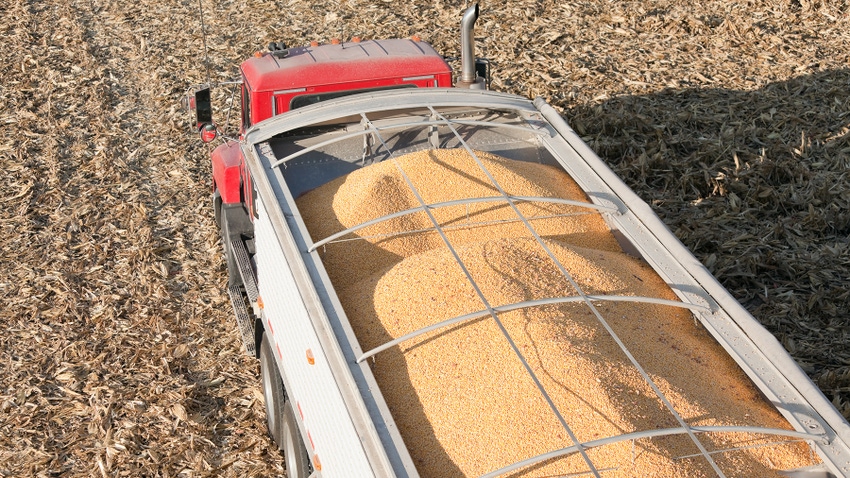
Sometimes it seems like we are on a merry-go-round. We operate from report to report looking for adjustments to be made, followed by arguing whether the numbers are correct (only to switch and start all over again when the next report is about to drop).
This week, we get USDA’s October World Agricultural Supply and Demand Estimates. For the majority of the 2023 growing season, the focus on these monthly reports has been on adjustments to yields. Our first look at the 2023/24 crop came in the May WASDE where USDA projected a yield of 181.5 bushels per acre on corn and 52.0 bpa on soybeans. In the latest edition, USDA pegged the yields at 173.8 bpa and 50.1 bpa respectively.
Yield debates
There is still plenty of debate as to whether those estimates should be smaller or larger. For the upcoming report, the average analyst estimate is 173.5 bpa on corn and 49.9 bpa on soybeans (both slightly less than the September projections). There is a lot of focus on yields by farmers, merchandisers, analysts and brokers.
This makes sense. For the most part, we can see the crop every day. I live on the fringes of the Corn Belt in western North Dakota. On my 15-mile drive to drop my daughter off at school, I drive past several thousand acres of corn. For most of us, it is in our backyard, and for producers, it is a major factor in farm revenue.
This creates the classic conundrum. We want big yields on our own farms, but smaller yields somewhere else so that the overall supply of grain is small enough to induce a bump in prices.
Focus on export demand
While I don’t want to infer that yield doesn’t matter, we might need to focus closer on demand for U.S. grains this year, specifically exports. Exports of both soybeans and corn have fallen from very lofty levels in 2021 and 2022. Taking a step back and viewing the 2022/23 crop and export numbers can be eye-opening.
USDA gave us our first look at the 2022/23 crop in May of 2022. That initial report estimated corn exports at 2.4 billion bushels. As of the most recent WASDE report, that export number had fallen to 1.665 billion bushels (a decrease of 735 million bushels in just 16 months). On soybeans, that reduction in exports was 210 million bushels over that same time span.
So, what does that mean going forward for the 2023/24 crop? For starters, a lot of the same demand headwinds that plagued us in 2022/23 remain in place today.
The prolonged drought in the Midwest has lowered the Mississippi River to levels that make river transportation more expensive. Thus, the U.S. has been less competitive in the world market. China, a significant purchaser during the boom in exports a few years ago, has remained quiet regarding U.S. purchases. South America, specifically Brazil, continues to increase production areas.
In our opinion, the country remains the 900-pound gorilla in the room. In USDA’s first look at the 2023/24 crop in May, the export expectation for corn was 2.100 billion bushels and 1.975 billion bushels for soybeans. In September, those numbers had dropped 50 million in corn to 2.050 billion bushels and 185 million in soybeans to 1.790 billion bushels.
We can argue until we are blue in the face on yields in the upcoming WASDE reports. Yet, at the current time, it is difficult to ignore the bearish factors we are facing on the demand front.
At AgMarket.Net, we feel if we were to receive some type of bullish surprise from Thursday’s report that it should be used as an opportunity to increase sales and hedges. And, while you’re at it, have you thought about your 2024 crop yet?
The risk of loss in trading futures and/or options is substantial and each investor and/or trader must consider whether this is a suitable investment. AgMarket.Net is the Farm Division of John Stewart and Associates (JSA) based out of St Joe, MO and all futures and options trades are cleared through ADMIS in Chicago IL. This material has been prepared by an agent of JSA or a third party and is, or is in the nature of, a solicitation. By accepting this communication, you agree that you are an experienced user of the futures markets, capable of making independent trading decisions, and agree that you are not, and will not, rely solely on this communication in making trading decisions. Past performance, whether actual or indicated by simulated historical tests of strategies, is not indicative of future results. Trading information and advice is based on information taken from 3rd party sources that are believed to be reliable. We do not guarantee that such information is accurate or complete and it should not be relied upon as such. Trading advice reflects our good faith judgment at a specific time and is subject to change without notice. There is no guarantee that the advice we give will result in profitable trades. The services provided by JSA may not be available in all jurisdictions. It is possible that the country in which you are a resident prohibits us from opening and maintaining an account for you.
The opinions of the author are not necessarily those of Farm Futures or Farm Progress.
Read more about:
WASDEAbout the Author(s)
You May Also Like






